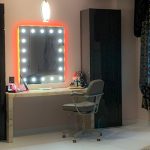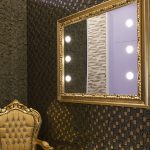
Heidi Klum once denied a photo to a photographer at Fashion Week due to bad lighting. “Do you see this light from above here? Not well!”
If lighting can make the difference between a good photo and a bad one, it also makes the difference between a good and a bad makeup application. In addition, as wise Mariah Carey once said “bad lighting is toxic.”
All the beauty gurus, makeup artists and hairdressers primarily, in fact agree that good lighting is the most essential of tools. Because without good light you don’t see the intensity, the accuracy of the colors and the symmetry of the make-up.
Having the right lighting can also greatly improve your skills in applying makeup. So if your brand new bathroom has bad lighting and is the place you usually do your make-up… don’t be discouraged and let’s see the most important elements to ensure you have a good makeup.
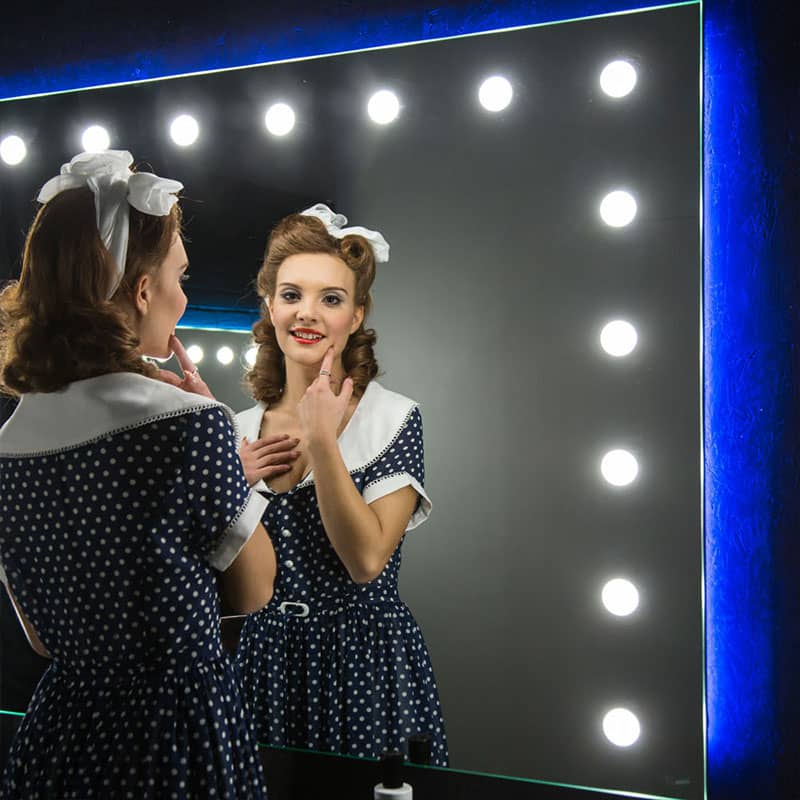
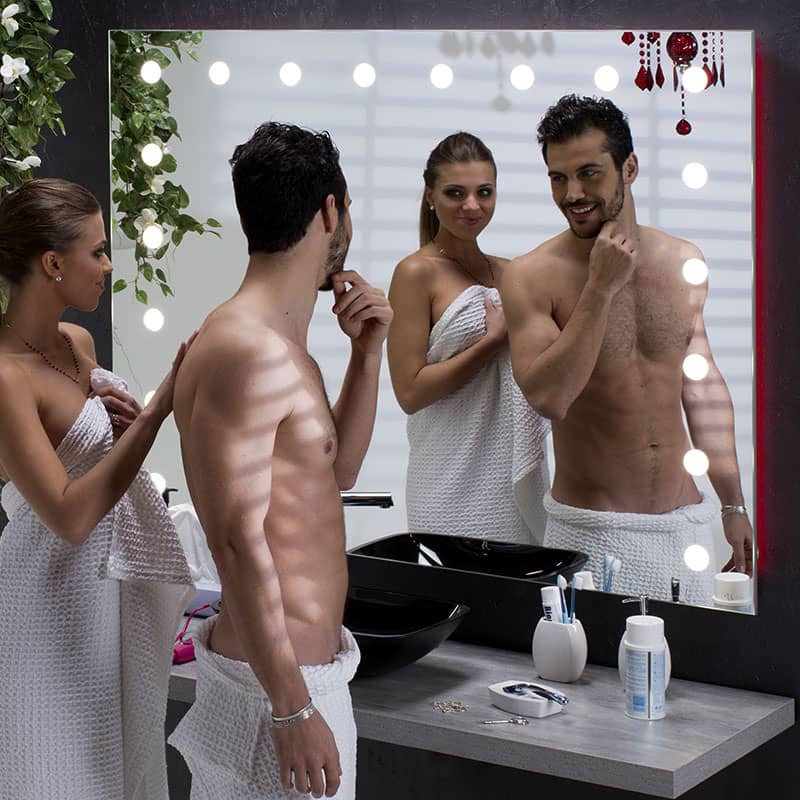
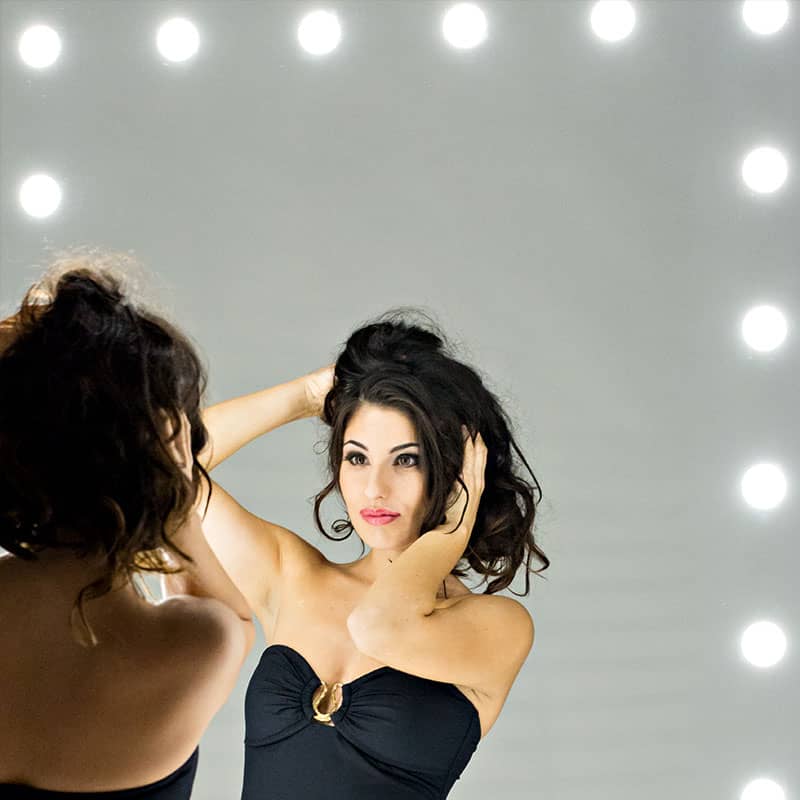
Dos and don’ts in makeup lighting
Unbelievably, the best way to apply makeup … is to make sure you see the makeup! Only in the absence of annoying shadows, will you be able to select the best lipstick or ideal eyeshadow and make the make-up of the tutorials, which often involve complex combinations of different shades and bases.
Nevertheless, be careful; do not rush to aim for a stadium spotlight, because over-lighting has two huge disadvantages:
- Too much light can cause heat and therefore excessive sweating
- with an “explosive” lighting in general, you end up wearing too much makeup
The most common light bulbs, slightly yellow and warm, are perfect for hiding tiredness under the eyes! But not ideal for showing how much concealer I really need
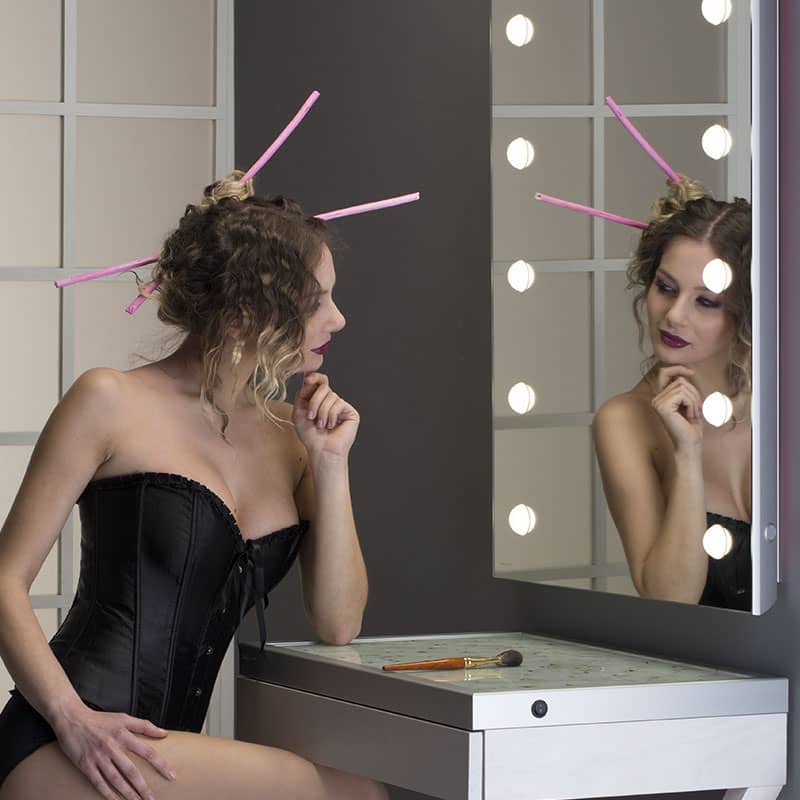
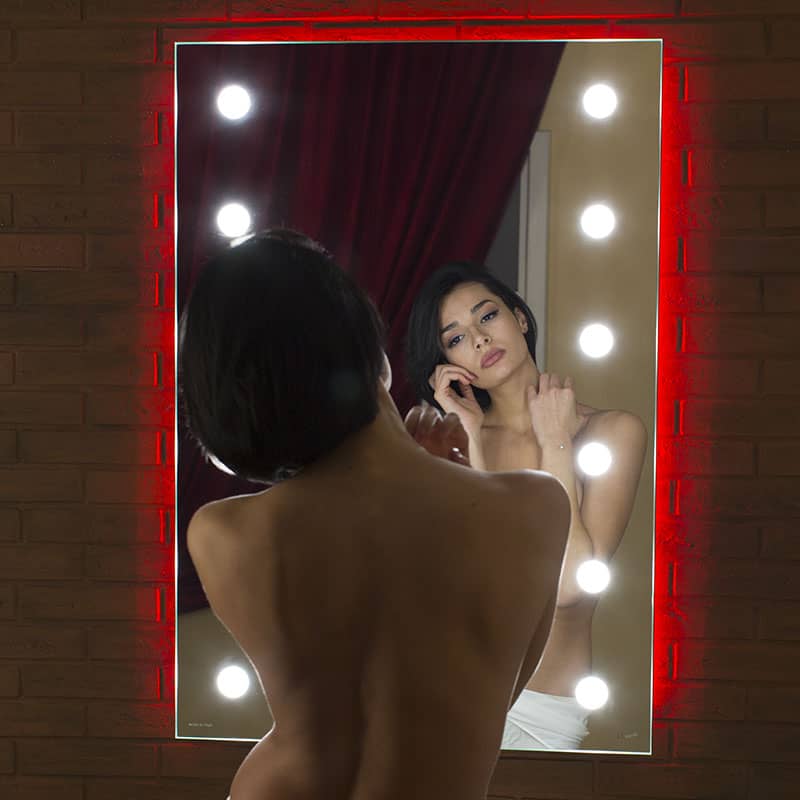
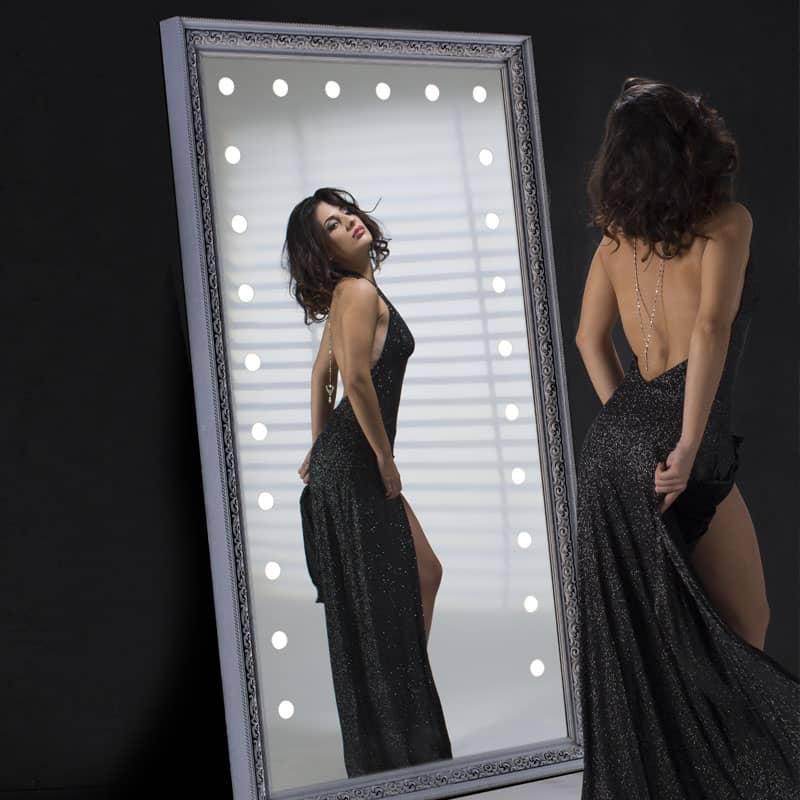
The worst enemies of a good makeup: yellow, pink and fluorescent lights
– yellow light simply lacks the necessary clarity and brightness; as it tends to be more dull, it will make you look tired or sick, and therefore overdo it with concealer, foundation and face powder.
-the pink light will make the skin appear more radiant and healthy, with the risk of not seeing imperfections and forgetting to apply the concealer in those areas.
– the fluorescent light … absolute evil! You see nothing as it really is, neither the colors nor the features. The guaranteed result is an excess of bronzer, blush and contouring in general.
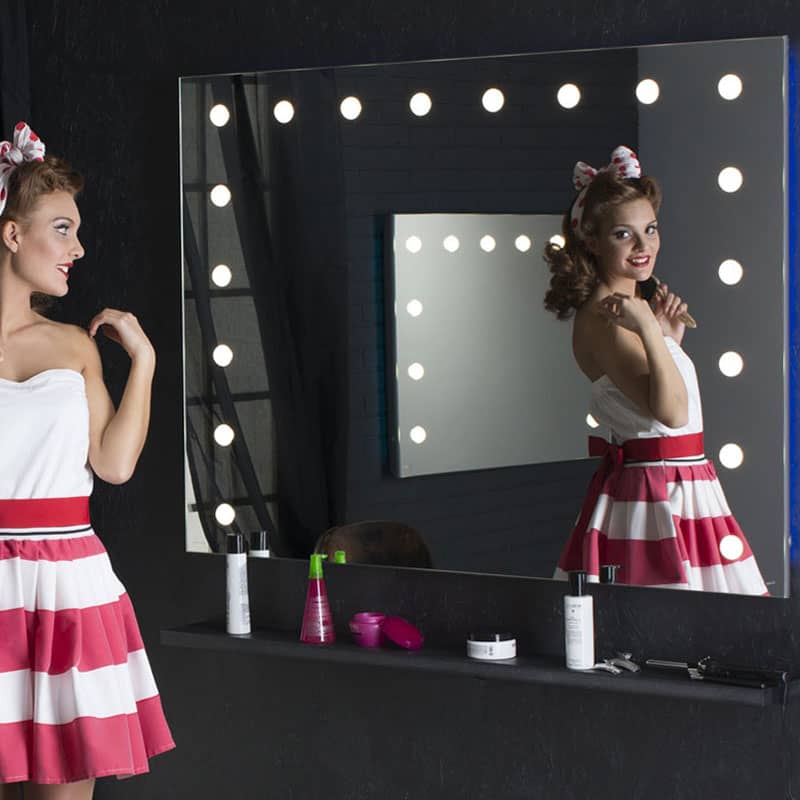
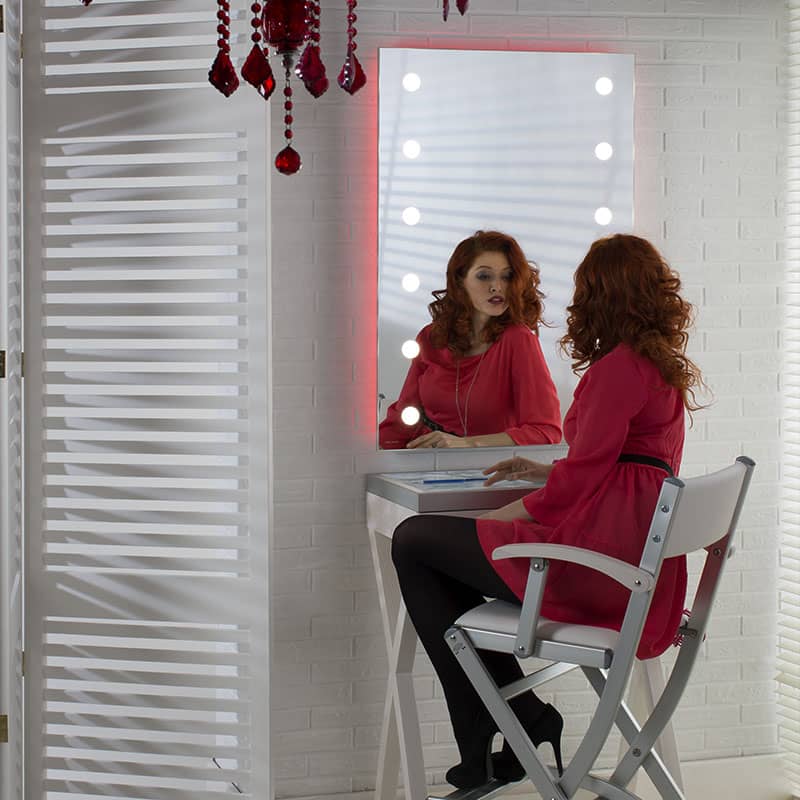
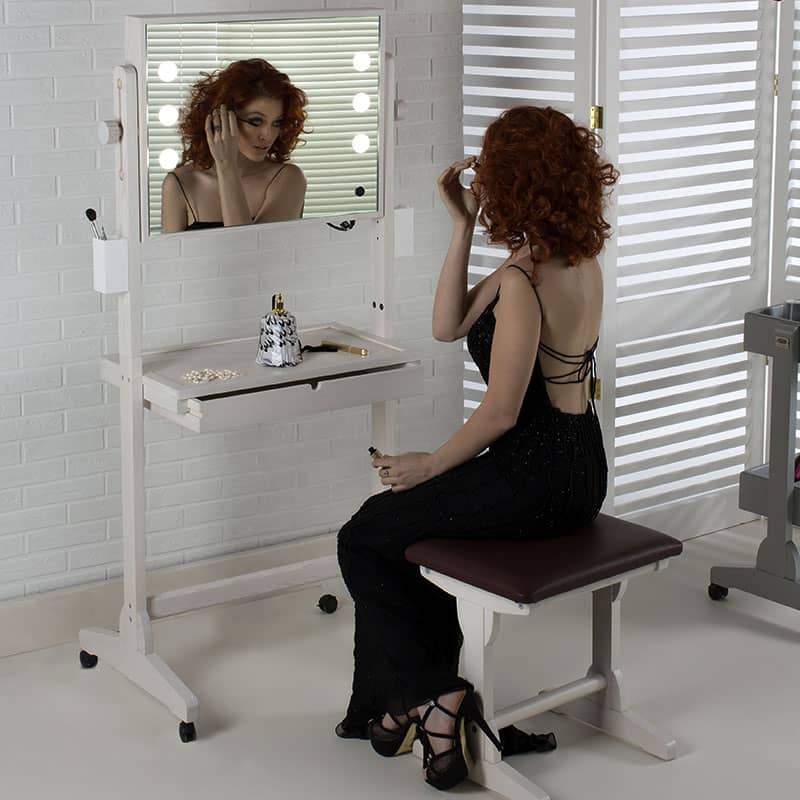
What lighting should you do your makeup in?
All makeup artists agree that the best light is natural, because you can easily see when something isn’t mixed properly. Nevertheless, what characteristics should an artificial light source have?
- High CRI: the color rendering index indicates how natural the colors of the objects illuminated by the light source appear. If the CRI is low, it doesn’t show color as it should. Low CRI lights tend to impart a greenish gray tinge to all colors, including skin (and therefore it may be difficult to see properly and cover facial redness for example).
- Suitable color temperature: that is, the hue of color assumed by the light emitted by an artificial light source. As we have seen, it must be as close as possible to that of natural light, let’s say the morning of a beautiful day (around 4200 K).
- Right amount of light: for a precision operation such as makeup, the lumens in the dedicated area must be sufficient (see our page about the bathroom mirrors).
- The location of the lights: the lighting should be positioned frontally (and never exclusively above … it will cast a shadow. In addition, the shadows are your enemies).
- Mirror quality: the mirror must be structurally of good quality, non-deformable over time, to ensure high definition and the best sharpness.
With the line Unica by Cantoni we wanted to decline Cantoni professional make-up mirrors in four ranges capable of satisfying and marrying the most diverse furnishing styles, from the bathroom to the bedroom. All mirrors with Unica lights are equipped with I-light lighting, with a CRI90 color rendering index and a color temperature of 4200K, with a minimum of 6 light points. A wide choice of standard or customizable sizes, in 4 different refined designs.
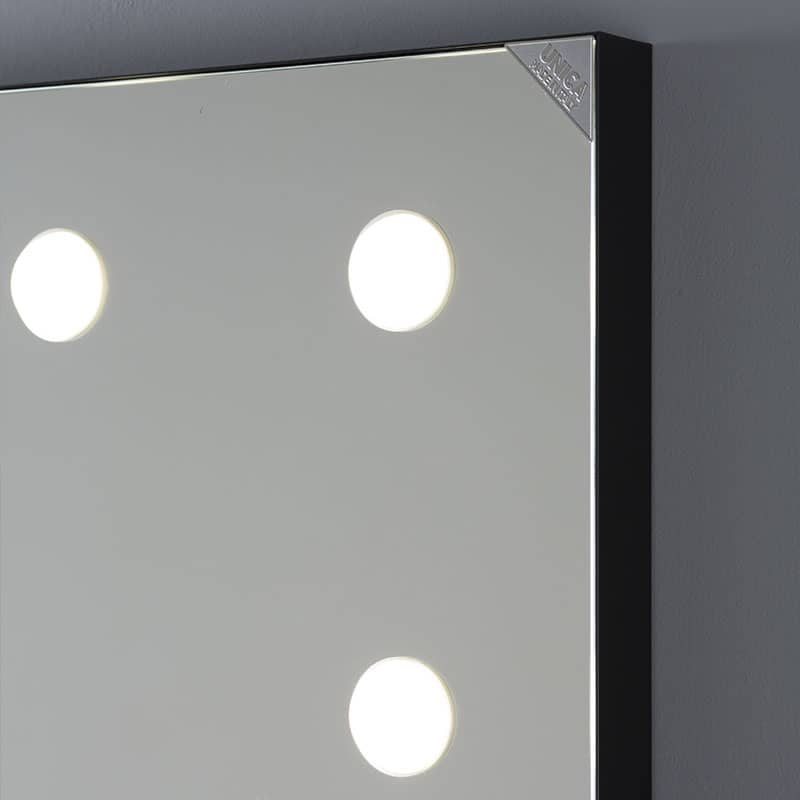
Essential lines, silver or black anodized profile
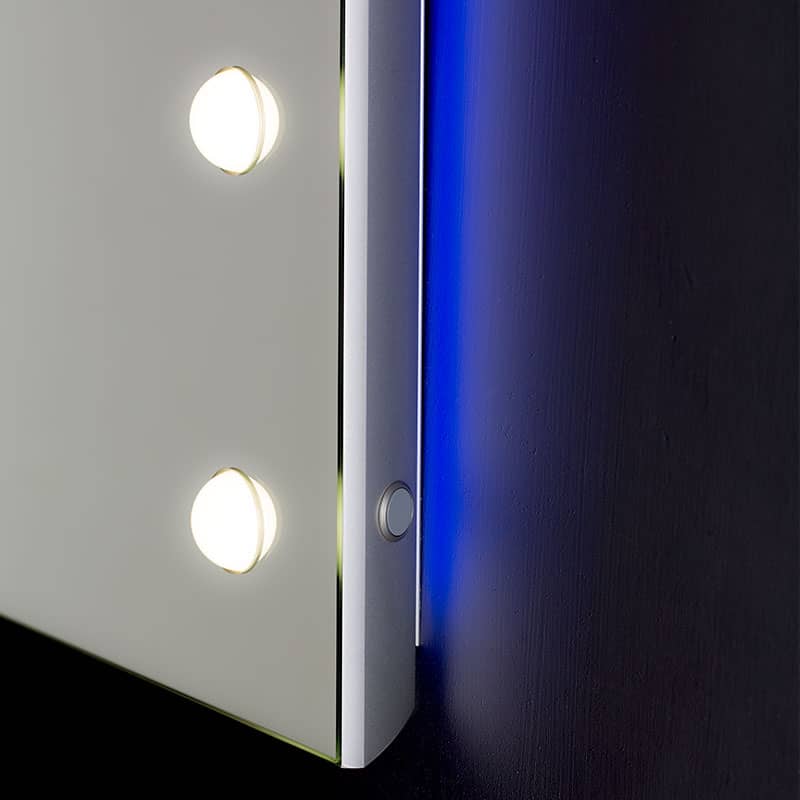
Hi-tech effect, white or multicolor backlight
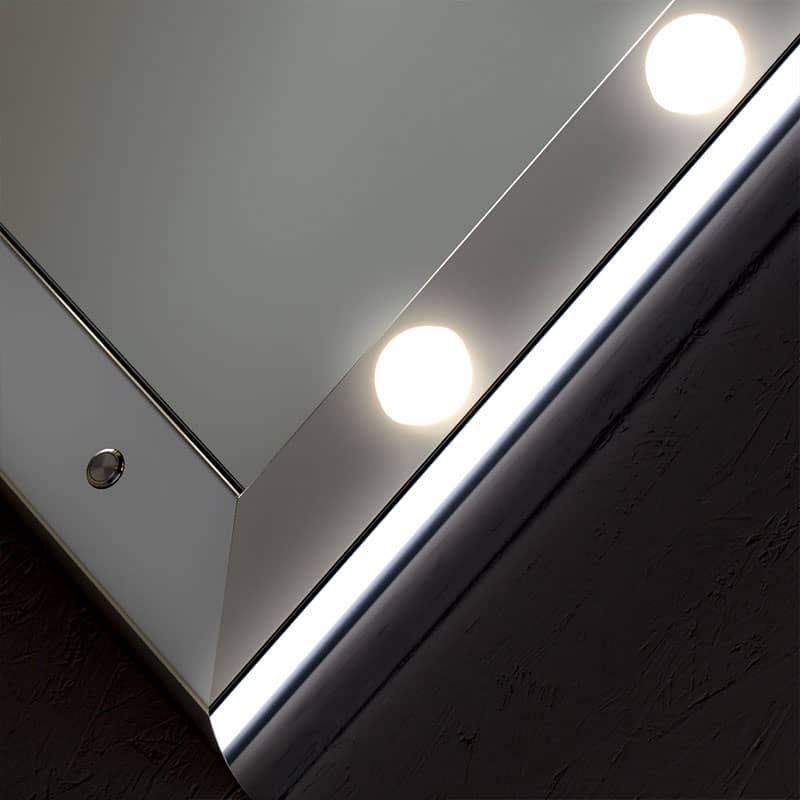
Geometric lines, lights in a splayed frame, gold or silver
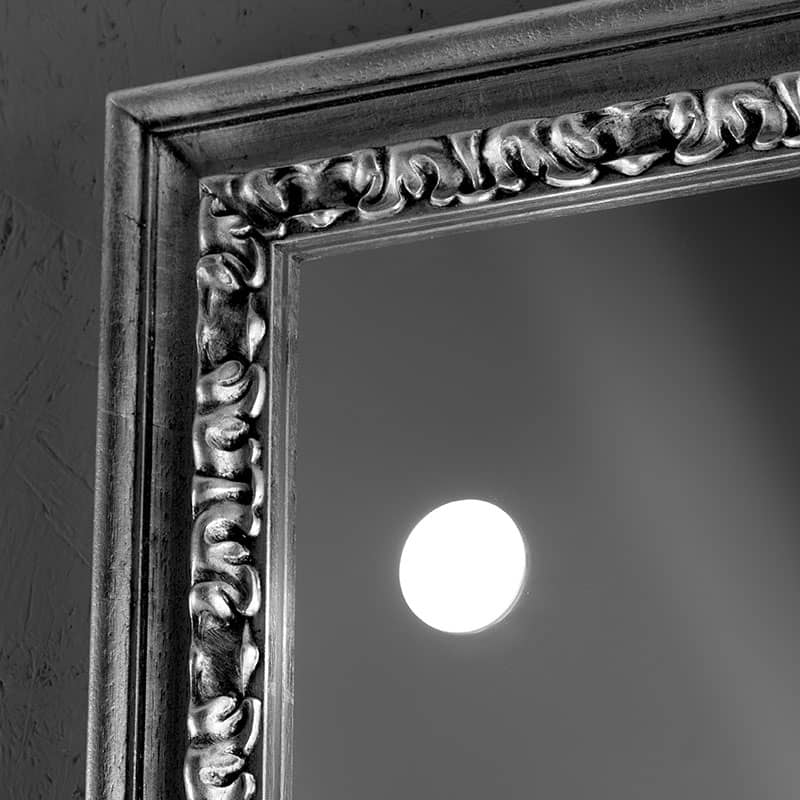
Refined solid wood frames, in various finishes and colors





